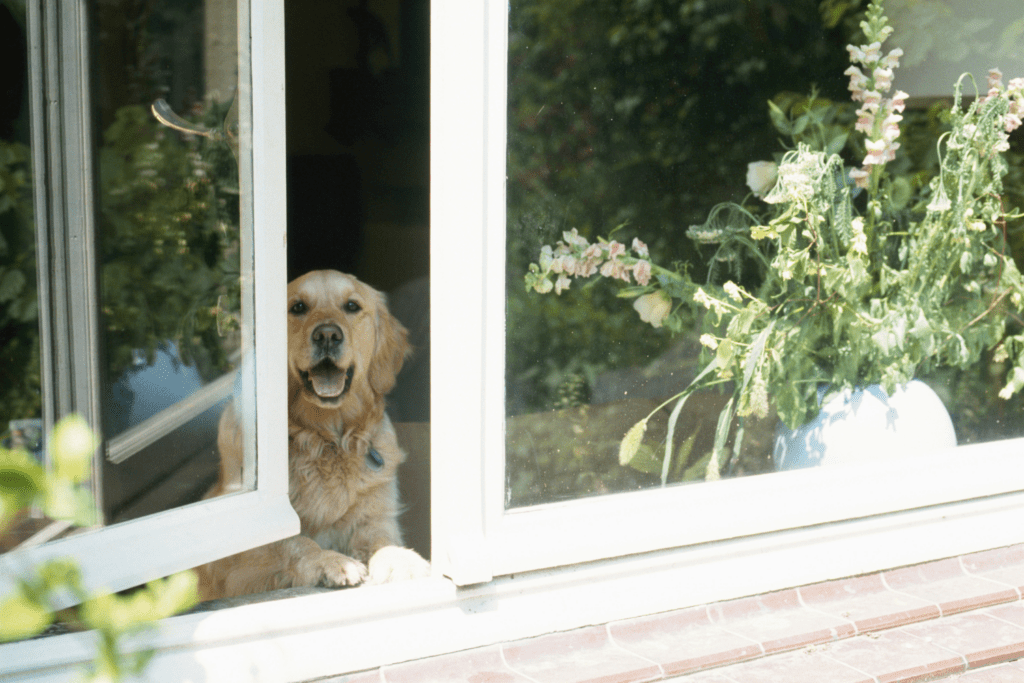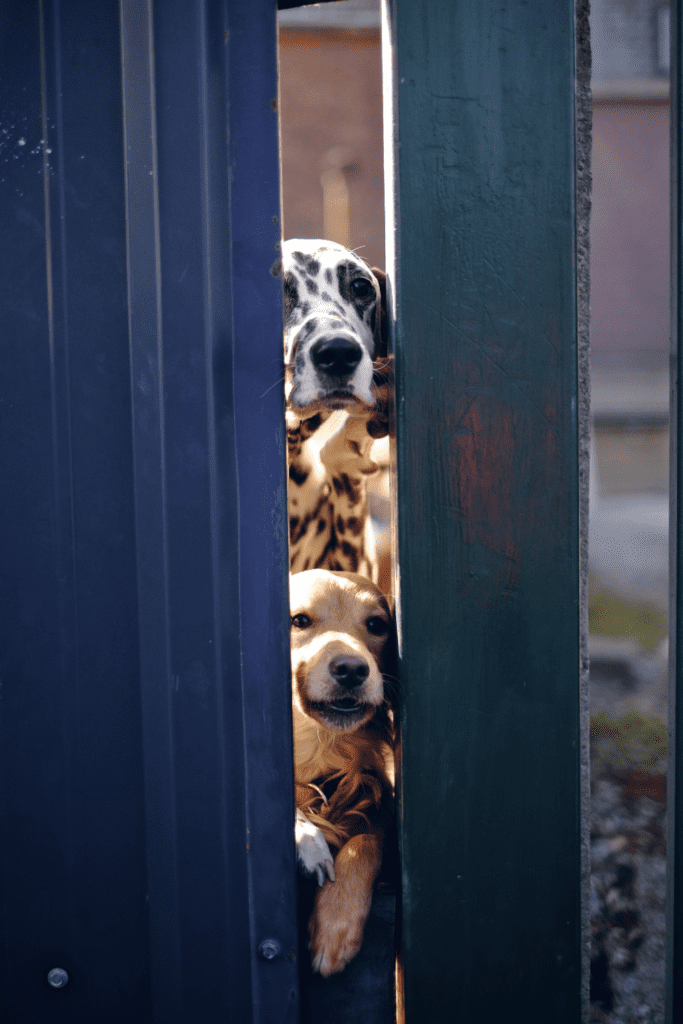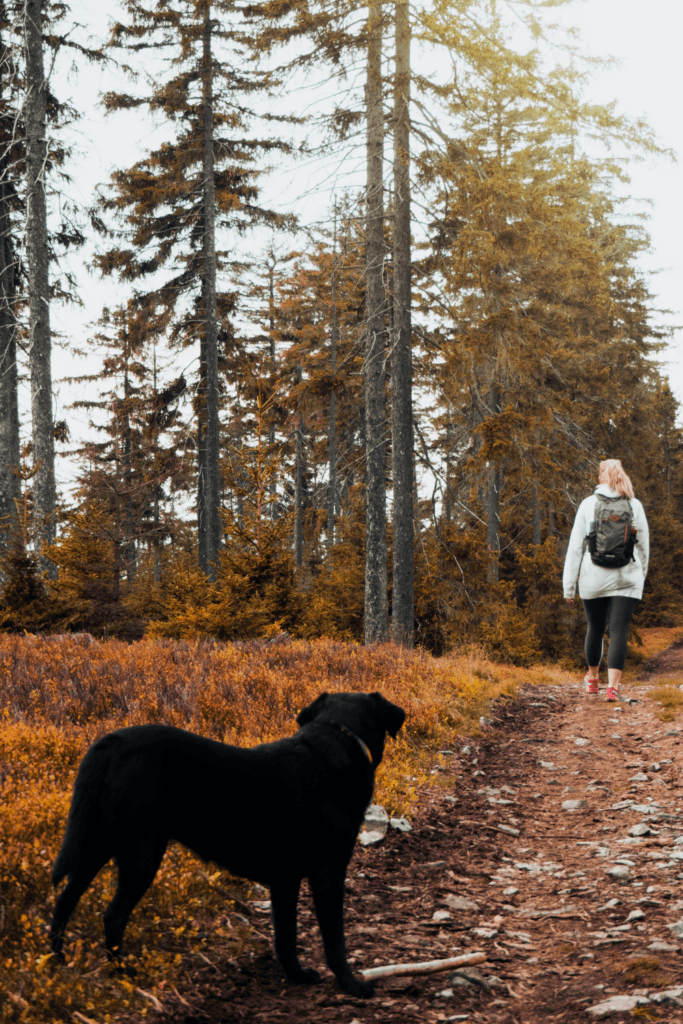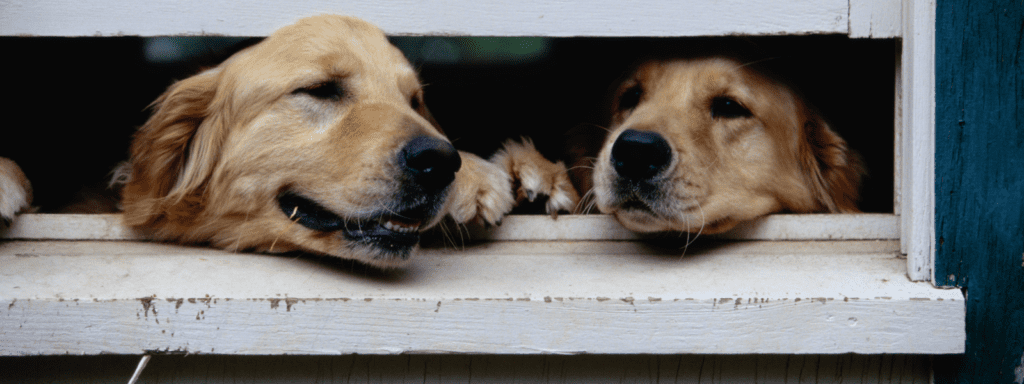Training your dog to be home alone
 Synne Hemsen Berg
Synne Hemsen Berg
Home office and social distancing have allowed many of us to become dog parents for the first time. Dogs have been an important friend during difficult and lonely times. But what do you do when you go back to work and have to leave your dog at home alone? Dogs are pack animals and become anxious when they are away from their family. Therefore, we must train our dogs to be home alone without creating anxiety and unwanted behaviour.
Although the training can create stress for both us and the dog, it is extremely important to carry it out. During a dog’s life, there will be situations where it has to be alone without this creating stress and anxiety.
How long can we leave the dog home alone?
How long your dog can be home alone, depends on how old the dog is and how far in training you have come. The following points you need to think about before you start training:
- Young puppies can not stay that long before they have to go to the bathroom. They are also still very curious and explore everything by biting and licking things. Small puppies can therefore not be alone for too long.
- As the puppy gets older, you can use the “1 month = 1-hour” rule. This means that a puppy that is 4 months old can stay for 4 hours, for example.
- Older dogs that have not been trained to be home alone should also not be left abruptly for several hours.
- The dog breed will also affect how dependent they are on you. Some dog breeds are very dependent on their herd, which can make training alone more challenging than in more independent breeds.
Puppies are also particularly dependent on us, and separation will create increased anxiety. Home alone distress should still start relatively quickly after you get your puppy home. As soon as the puppy is confident in his new environment, you can gradually begin training home alone.

How do I train my dog to be home alone?
As with all training, this is about small steps and patience. You and your puppy will find it uncomfortable to practice being home alone, but if you do it gradually over time, it will create a more calm and secure situation.
Step 1: Make triggers harmless
You can start as soon as you take your puppy home by making triggers that indicate that you are leaving, harmless. Begin this step by going through your “I’m leaving” routine without actually leaving. This means that you put on your shoes and jacket, or pick up your keys. Then you give your dog a treat, take off your shoes and jacket and put down the keys. Repeat this step for a few days.
Step 2: 5 minutes without you
Eventually, you can begin leaving the room or going out of the house and closing the door. Come back immediately and give your dog a treat. Continue with this step until you can leave the room for a short period (5 minutes) without the puppy showing signs of stress and restlessness. You do not always have to go through your “I’m going” routine before you leave the room.
Once your dog is completely calm when you leave the room for 5 minutes then you can increase the time. With Nova, we practised this step for 2 months where we gradually increased the period we left the room for up to 45 minutes. We would eventually get ready for work while Nova was alone in the bedroom.
Your puppy will probably cry, bark and think this is very unfair. You will also find it difficult not to open the door and comfort your puppy. Do not despair and do not stop the training by returning to the room. As long as you have left your puppy in an area with toys, a bed and water and without potential dangers (electrical cords, small objects, etc.) she will be safe. Also, read our blog on how to puppy-proof your home so that your puppy is safe when he is alone.

Step 3: Go to the store
When the puppy can relax alone for longer periods with you in the house (up to an hour) you can begin to leave the house on shorter walks (up to 45 minutes). It is common for the dog to bark and cry a little as you leave, but if you have given the dog enough time to complete the first 2 steps, she will calm down fairly quickly. You can also video monitor your dog when you are out of the house. Then can ensure your dog is safe and able to calm down:
- If you are 2 people, you can set up a video call on your cellphones and leave one phone at home while you bring the other phone with you.
- There are also surveillance cameras that are specially designed to video monitor dogs.
- You can also use Babycall with or without video. Video is recommended, so you can see the dog’s behaviour as well.
Remember that if your puppy is not house-trained, then it may have an accident in your absence. This must not be punished!
Step 4: The dog is safe alone
When you see that your dog calms down quickly when he is alone, you can start leaving him home alone while you are at work or doing other activities. You also do not need to video-monitor your dog now if you do not want to. Once you have come to this step, your dog should be house-trained. A rule of thumb is when the puppy is between 3-6 months, you can use the “1 month = 1-hour” rule. When the puppy is 6 months old, he can be alone for 6 hours. Leaving the dog at home alone without supervision for more than 8 hours is not good, as it needs to go to the toilet etc.
A dog needs a walk every day. How often and for how long, has to do with the dog’s size, training and personality. Some dogs have to go out every 4 hours and some can hold it in for 8 hours. You need to assess your dog and its needs. If you have the opportunity to walk your dog during lunch, do so. Alternatively, you can get a dog sitter, or a kind neighbour to take your dog out once in a while while you are at work. You must create good routines, for you and your dog.

Tips for leaving your dog home alone
Here are some things you can do to help your dog be calm and happy when spending time alone:
- Always take your dog out for a nice walk before you go. This reduces the chance of accidents inside. In addition, it gives your dog fresh air, exercise and mental stimulation that helps it be calmer.
- Play soothing music, or watch “dog TV”. If you have the radio on, make sure the channel you are on is calm and without sudden loud noises (news for example is not recommended).
- Give your dog a task that takes time to solve while being soothing. For example, you can give it an activity toy, or fill a Kong before you go.
- Be calm when you leave. Your dog perceives your stress and will be affected by this energy. Walk out the door in a normal and calm way. Do not make a big deal out of leaving.
- If your dog is very anxious by nature, you can add chamomile tea to her water before you go, or give her a calming treat.
- If you struggle to train your dog, seek professional help from a dog trainer.
Dogs are pack animals so by nature they do not want to be left alone. Therefore, training your dog to be home alone can take a while. Do not despair and have patience. Follow the steps and if the dog shows signs of relapse in the training, go one step back and then start again. This is important to get a safe dog and give you freedom.

